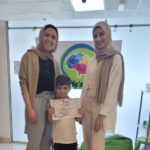Every year, individuals and organisations around the world celebrate ADHD Awareness Month October. Last month, organisations and schools around the world held events and educational activities to increase awareness, education, acceptance, and to foster worldwide support for individuals with ADHD and their families.
What is ADHD?
According to the National Center for Biotechnology Information (NCBI), 8.4 percent of children and 2.5 percent of adults around the world have been diagnosed with ADHD. Attention deficit hyperactivity disorder (ADHD) impacts children and teens and can continue into adulthood.
ADHD is the most commonly diagnosed mental disorder of children. However, ADHD also affects many adults. Children with ADHD may be hyperactive and unable to control their impulses. These behaviors can interfere with school and home life.
ADHD Fast Facts
- Males are almost three times more likely to be diagnosed with ADHD than females.
- During their lifetimes, 13 percent of men will be diagnosed with ADHD. Just 4.2 percent of women will be diagnosed.
- On average, children are usually diagnosed with ADHD at 7 years old.
- Typically, the symptoms of ADHD first appear between the ages of 3 and 6.
- ADHD impacts 2.5 percent of adults.
Symptoms and Diagnosis
ADHD is typically first identified in school-aged children when their symptoms lead to disruption in the classroom or difficulties with their schoolwork. A diagnosis is based on the symptoms that have occurred over the past six months.
A child or adult with attention deficit hyperactivity disorder may be diagnosed with one of three types of ADHD: Inattentive ADHD, Hyper-Impulsive ADHD, or Combined ADHD.
Inattentive ADHD
Individuals diagnosed with Inattentive ADHD may experience symptoms associated with inattention compared to those diagnosed with impulsivity and hyperactivity ADHD. Children and adults may struggle with impulse control or hyperactivity at times.
Additionally, individuals diagnosed with inattentive ADHD often:
- are easily distracted and may miss out on essential details
- become bored and appear disinterested
- have trouble following directions
- have difficulties focusing on a single task
- struggle to learn new information and organizing thoughts
- struggle to listen and stay engaged
- appear to be daydreaming
- process information slower than others
Typically, Inattentive ADHD affects more girls than boys.
Hyperactive-Impulsive ADHD
Individuals diagnosed with Hyperactive-Impulsive ADHD often exhibit symptoms of impulsivity and hyperactivity. Children and adults with this type if ADHD often exhibit signs of inattention. Additionally, individuals diagnosed with Hyperactive-Impulsive ADHD often:
- feel restless, and are prone to fidgeting and squirming.
- have difficulty sitting still
- talk constantly
- struggle to stay focused on the task at hand, often touching and playing with objects (even when it’s inappropriate to the task at hand)
- difficulties engaging in quiet or silent activities
- appear to be constantly “on-the-go”
- are impatient, and act out of turn
- fail to recognise the consequences of their actions
Children with hyperactive-impulsive type ADHD may find it hard to concentrate in the classroom. This can make learning more difficult for themselves and other students.
Combined ADHD
Many individuals diagnosed with ADHD experience a combination of symptoms. For these people, their symptoms do not exclusively fall within the inattention or hyperactive-impulsive behavior. Rather, they experience a combination of symptoms from both of the categories of ADHD.
While most individuals, with or without ADHD, experience inattentive or impulsive behaviors to a certain degree, these feelings and behaviours are more severe in people with ADHD. Additionally, individuals with ADHD can not control their behaviour. These behaviours occur more often and often interfere with how they function at home, work, school and in social situations.
According to The National Institute of Mental Health, most children have combination type ADHD. The most common symptom in preschool-age children is hyperactivity.
The Brain Workshop
For individuals living with ADHD, cognitive training can be life-altering. When specific cognitive skills are reinforced, children and adults with ADHD learn, think, and perform mentally at school, work, and life with greater ease. While we do not diagnose, through cognitive skills training, our programs have improved the cognitive performance of individuals with many diagnoses—including clients of all ages previously diagnosed with ADHD.
Whether you have are an adult or child living with ADHD, the professionals at the Brain Workshop can offer assistance. As a certified BrainRx® center, we offer the best in personalised brain-based training for individuals ages 6 to adult to help with ADHD. If you’re interested in learning more about how our cognitive training can help support you or your family member living with ADD or ADHD contact a member of our team to learn more.






